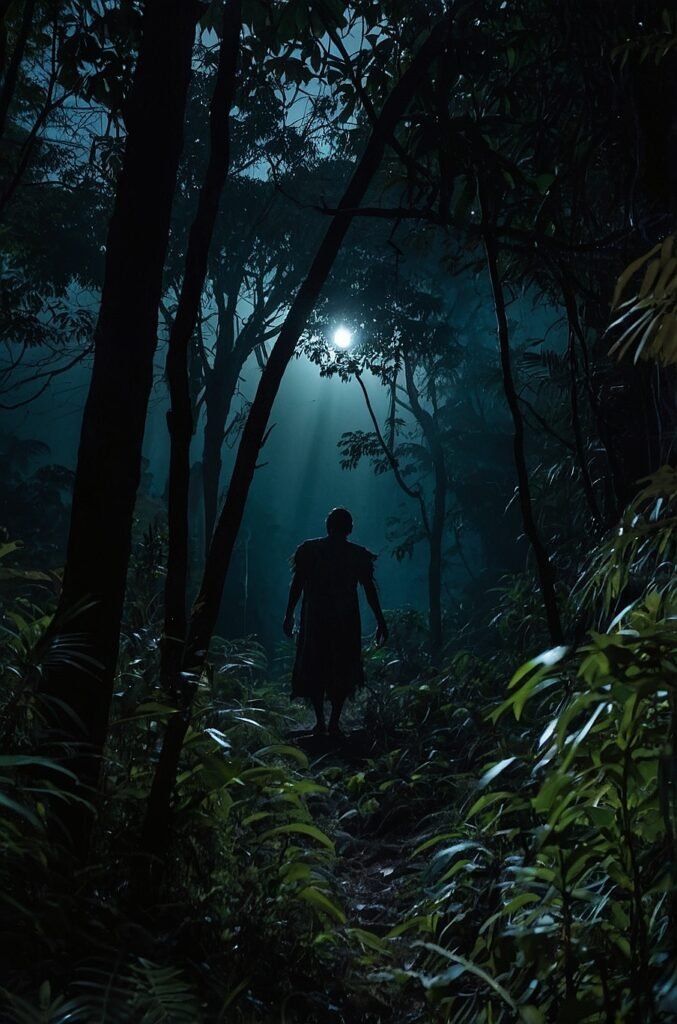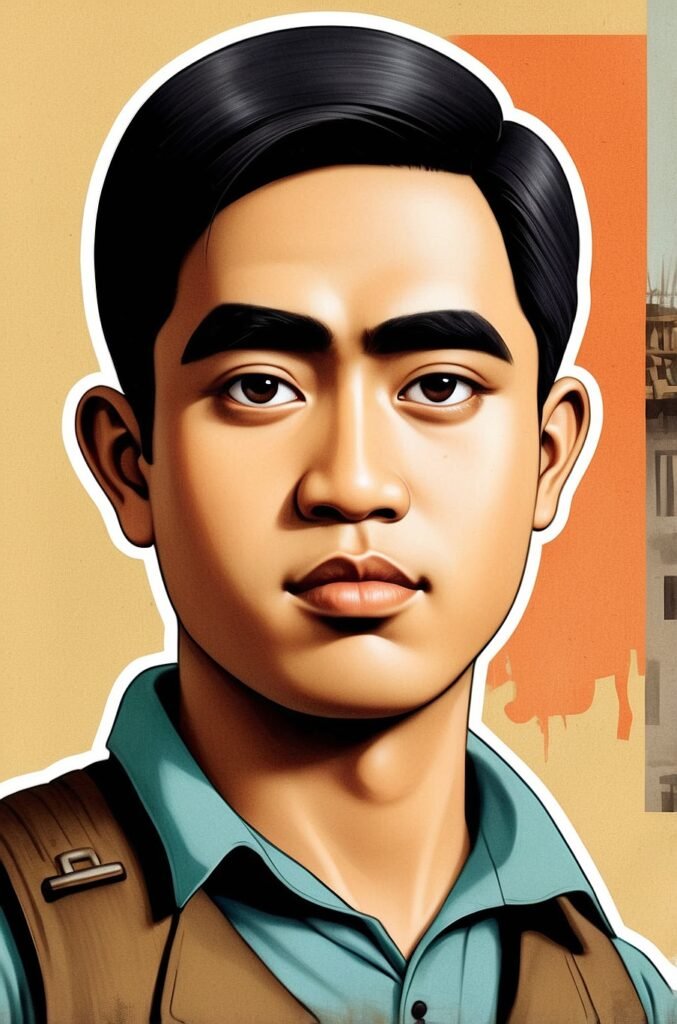In the rich tapestry of Philippine mythology, few creatures inspire as much fear and fascination as the Aswang. These shapeshifting monsters have haunted the collective imagination of Filipinos for centuries, weaving their way into folklore, literature, and popular culture. The Aswang is not merely a single entity but rather a complex category of mythical beings, each with its own terrifying characteristics and abilities. This blog post delves deep into the world of Aswang, exploring their origins, various forms, and the lasting impact they have had on Filipino society and beyond.
The Origins of Aswang Lore
Pre-colonial Roots and Evolution
The origins of Aswang lore can be traced back to pre-colonial Philippines, where animistic beliefs and a deep connection to the natural world shaped the spiritual landscape of the archipelago. These early tales of shapeshifting creatures were likely born from a combination of factors, including attempts to explain natural phenomena, reinforce social norms, and cope with the uncertainties of life in ancient times. As the centuries passed, the concept of Aswang evolved, absorbing influences from various cultures and adapting to changing societal needs.
Regional Variations and Cultural Significance
The Aswang myth is not uniform across the Philippines, with different regions boasting their own unique interpretations and variations. For instance, in the Visayas region, particularly in Capiz province, Aswang stories are especially prevalent and deeply ingrained in local culture. Meanwhile, in other parts of the country, similar creatures may go by different names or possess slightly different attributes. This regional diversity highlights the adaptability of the Aswang myth and its importance in reflecting local beliefs and concerns.
Colonial Influence and Transformation
The arrival of Spanish colonizers in the 16th century brought significant changes to Philippine society, including the introduction of Christianity. This cultural shift had a profound impact on existing folklore, including Aswang legends. The Catholic Church often demonized local beliefs, leading to a blending of indigenous and Christian elements in many mythological narratives. As a result, Aswang stories began to incorporate more explicitly evil characteristics, further cementing their status as fearsome creatures in the Filipino psyche.
Types of Aswang: A Bestiary of Terror
The Shapeshifting Aswang
Perhaps the most iconic type of Aswang is the shapeshifter, capable of transforming from human to animal form at will. These creatures often appear as ordinary people during the day, blending seamlessly into society. However, at night, they reveal their true nature, typically taking the form of a dog, pig, or bird. This ability to shift between human and animal forms makes the shapeshifting Aswang particularly terrifying, as it can be difficult to distinguish them from ordinary creatures or people.
The Vampire-like Aswang
Another common type of Aswang bears similarities to vampires found in Western folklore. These creatures are said to feed on human blood or organs, often targeting pregnant women and unborn children. Unlike traditional vampires, however, Aswang of this variety may use a proboscis-like tongue to extract their gruesome meals, rather than relying on fangs. This unique feeding method adds an extra layer of horror to their already fearsome reputation.
The Viscera Sucker
One of the most grotesque variations of the Aswang is the viscera sucker, known in some regions as the “Manananggal.” This creature is said to be able to separate its upper body from its lower half, using wings to fly through the night in search of prey. The viscera sucker typically feeds on the internal organs of its victims, using its long, thread-like tongue to extract its grisly meal. The image of a disembodied torso floating through the air is a particularly chilling aspect of Aswang lore.
The Ghoul-like Aswang
Some Aswang legends describe creatures that bear a resemblance to ghouls or zombies found in other mythologies. These entities are said to feed on corpses, digging up graves or preying on the recently deceased. While less common than other types of Aswang, these ghoulish variants contribute to the overall diversity and complexity of Aswang mythology.
To better illustrate the various types of Aswang, here’s a comparison table:
| Type of Aswang | Primary Characteristics | Feeding Habits | Transformation Abilities |
|---|---|---|---|
| Shapeshifter | Appears human by day, animal by night | Varies | Can transform into animals (e.g., dog, pig, bird) |
| Vampire-like | Resembles humans, active at night | Blood and organs, especially from pregnant women | Limited or no transformation |
| Viscera Sucker | Separates upper body from lower half | Internal organs | Can detach upper body and grow wings |
| Ghoul-like | Resembles decaying corpses | Feeds on dead bodies | Limited or no transformation |
Aswang in Filipino Culture and Society
Impact on Social Behavior and Community Dynamics
The belief in Aswang has had a significant impact on Filipino social behavior and community dynamics. In areas where Aswang lore is particularly strong, people may take precautions such as avoiding going out alone at night, securing homes with specific charms or prayers, and maintaining a heightened awareness of their surroundings. This collective vigilance can foster a sense of community cohesion, as people band together for protection against a common threat, whether real or imagined.
Use in Social Control and Moral Education
Aswang stories have long been used as tools for social control and moral education, particularly for children. Parents and elders might invoke the threat of Aswang to discourage bad behavior or enforce curfews. These tales also often carry moral lessons about the consequences of greed, cruelty, or other societal transgressions. By associating immoral actions with the risk of becoming or falling victim to an Aswang, these stories reinforce cultural values and norms.
Economic and Tourism Implications
The prevalence of Aswang lore has had interesting economic and tourism implications in certain parts of the Philippines. Some regions, such as Capiz province, have embraced their reputation as Aswang hotspots, incorporating these legends into local tourism strategies. This has led to the development of Aswang-themed attractions, tours, and merchandise, creating a unique form of dark tourism that capitalizes on the public’s fascination with the supernatural.
Aswang in Modern Media and Popular Culture
In recent decades, Aswang have found new life in modern media and popular culture. Filipino films, television shows, and literature frequently feature these creatures, often adapting traditional lore to contemporary settings. This ongoing presence in popular media ensures that Aswang remain relevant to younger generations, even as traditional beliefs may wane. Additionally, the unique characteristics of Aswang have begun to attract international attention, with these Filipino monsters appearing in global media productions and inspiring creators worldwide.
The Psychology of Aswang Belief
Fear of the Unknown and Supernatural
The enduring power of Aswang legends can be partly attributed to the universal human fear of the unknown and supernatural. These creatures embody many primal fears: the threat of predation, the anxiety of not being able to trust one’s neighbors, and the terror of losing loved ones to unseen forces. By giving form to these abstract fears, Aswang stories provide a tangible focus for anxiety and a framework for understanding inexplicable events or tragedies.
Cognitive Biases and Belief Persistence
Several cognitive biases contribute to the persistence of Aswang beliefs, even in the face of scientific explanations for phenomena once attributed to these creatures. Confirmation bias leads people to seek out information that confirms their existing beliefs while disregarding contradictory evidence. The availability heuristic causes individuals to overestimate the likelihood of dramatic or sensational events, such as Aswang attacks, based on how easily they can recall such stories. Understanding these psychological factors helps explain why Aswang lore continues to captivate and influence people, even in modern times.
Cultural Identity and Belief Systems
For many Filipinos, Aswang legends are an integral part of their cultural heritage and identity. These stories connect people to their ancestors and to a shared mythological landscape that is uniquely Filipino. Even for those who may not literally believe in the existence of Aswang, these legends can serve as a source of cultural pride and a link to traditional wisdom and ways of understanding the world.
Scientific and Skeptical Perspectives on Aswang
Rational Explanations for Aswang Encounters
While belief in Aswang remains strong in many communities, skeptics and researchers have proposed various rational explanations for reported Aswang encounters. These explanations often involve a combination of psychological factors, misidentification of natural phenomena or animals, and the power of suggestion. For instance, the sound of a “tik-tik” bird, often associated with the approach of an Aswang, may simply be a nocturnal bird species misinterpreted through the lens of folklore.
Medical Conditions and Aswang Accusations
Historically, some individuals accused of being Aswang may have suffered from medical conditions that were poorly understood at the time. Conditions such as porphyria, which can cause sensitivity to sunlight and discoloration of teeth, or certain mental health disorders that affect behavior, might have contributed to suspicions of supernatural activity. In modern times, understanding these medical perspectives can help destigmatize conditions that were once associated with Aswang-like characteristics.
Folklore Studies and Anthropological Research
Academic studies in folklore and anthropology have provided valuable insights into the cultural significance and evolution of Aswang legends. Researchers have examined how these stories reflect societal values, fears, and power structures within Filipino communities. Such scholarly work helps preserve these cultural narratives while also providing a framework for understanding their role in society from a more objective standpoint.
Balancing Tradition and Scientific Understanding
The challenge for many communities lies in finding a balance between respecting cultural traditions and embracing scientific understanding. Education plays a crucial role in this balance, allowing individuals to appreciate the cultural value of Aswang lore while also developing critical thinking skills to evaluate supernatural claims. This approach can help preserve the rich cultural heritage associated with Aswang legends without perpetuating potentially harmful superstitions.
Aswang in the Digital Age: Evolution of a Legend
Online Communities and Digital Storytelling
The internet has provided new platforms for sharing and discussing Aswang stories, leading to the formation of online communities dedicated to Filipino folklore. Social media, forums, and blogs have become spaces where people can share personal experiences, debate the existence of Aswang, and collaborate on creative projects inspired by these legends. This digital landscape has allowed for a more dynamic and interactive engagement with Aswang lore, bridging geographical distances and generational gaps.
Virtual Reality and Immersive Experiences
Emerging technologies such as virtual reality (VR) and augmented reality (AR) are opening up new possibilities for experiencing Aswang legends. VR applications could allow users to “encounter” Aswang in immersive, controlled environments, providing thrilling experiences while also educating users about Filipino folklore. These technological adaptations of traditional stories demonstrate the enduring appeal of Aswang legends and their ability to evolve with changing media landscapes.
Global Reach and Cross-Cultural Exchange
The digital age has facilitated the spread of Aswang lore beyond the borders of the Philippines. International audiences are increasingly exposed to these unique mythological creatures through online content, global streaming platforms, and cross-cultural exchanges. This wider exposure has led to interesting adaptations and interpretations of Aswang in various cultural contexts, contributing to a rich tapestry of global folklore and supernatural narratives.
Fact-Checking and Digital Literacy
As Aswang stories circulate online, there is an increased need for digital literacy and fact-checking skills. False or exaggerated claims about Aswang sightings or activities can spread rapidly through social media, potentially causing unnecessary fear or confusion. Educating the public about critical evaluation of online content and the importance of verifying sources is crucial in maintaining a balanced perspective on these legendary creatures in the digital age.
The Future of Aswang Lore: Preservation and Evolution
Cultural Heritage Preservation Efforts
As modernization continues to shape Filipino society, there are ongoing efforts to preserve Aswang lore as an important part of cultural heritage. Museums, cultural centers, and educational institutions are working to document and showcase these legends, ensuring that future generations can appreciate and learn from this rich mythological tradition. These preservation efforts often involve collaboration between folklorists, anthropologists, and community elders to capture the nuances and regional variations of Aswang stories.
Adaptation in Contemporary Art and Literature
Contemporary Filipino artists and writers are finding new ways to interpret and present Aswang legends, adapting these traditional stories to modern contexts and artistic mediums. From graphic novels to experimental theater productions, Aswang are being reimagined in ways that resonate with contemporary audiences while still honoring their cultural roots. This ongoing creative engagement ensures that Aswang lore remains a vibrant and evolving part of Filipino cultural expression.
Potential for Cross-Cultural Exchange and Global Recognition
As Filipino culture gains more global recognition, there is potential for Aswang lore to become more widely known and appreciated internationally. This could lead to interesting cross-cultural exchanges, with Aswang potentially influencing or being influenced by supernatural legends from other parts of the world. Such exchanges could enrich the global tapestry of mythological narratives and foster greater understanding and appreciation of Filipino culture.
Balancing Tradition and Progress
The challenge for future generations will be to find a balance between preserving the traditional aspects of Aswang lore and allowing it to evolve naturally with changing societal norms and beliefs. This may involve reinterpreting these legends in ways that align with contemporary values while still maintaining their essential cultural significance. The ongoing dialogue between tradition and progress will likely shape the future of Aswang lore in fascinating and unpredictable ways.
Conclusion: The Enduring Legacy of Aswang in Filipino Culture
The Aswang, with its myriad forms and terrifying abilities, stands as a testament to the rich and complex mythology of the Philippines. These shapeshifting monsters have captivated the imagination of Filipinos for centuries, evolving from pre-colonial beliefs to become an integral part of modern Filipino culture. The enduring popularity of Aswang legends speaks to their deep psychological resonance and their ability to adapt to changing social contexts.
As we have explored in this blog post, Aswang are more than just frightening creatures of the night. They are repositories of cultural wisdom, reflections of societal fears and values, and bridges between the past and present. The various types of Aswang – from shapeshifters to viscera suckers – demonstrate the diversity and creativity of Filipino folklore, while their impact on social behavior, popular culture, and even tourism highlights their ongoing relevance in contemporary society.
The scientific and skeptical perspectives on Aswang provide valuable insights into the psychological and sociological factors that contribute to the persistence of these beliefs. At the same time, the efforts to preserve and adapt Aswang lore for new generations ensure that these legends will continue to evolve and find new audiences in the digital age and beyond.
As we look to the future, the Aswang remains a powerful symbol of Filipino cultural identity, a source of fascination for people around the world, and a reminder of the enduring power of mythology to shape our understanding of the world around us. Whether viewed as literal beings, metaphorical representations of societal fears, or simply captivating stories, the Aswang will undoubtedly continue to haunt the collective imagination of Filipinos and folklore enthusiasts for generations to come.
Disclaimer: This blog post is intended for informational and educational purposes only. The information presented here is based on folklore, mythology, and various cultural interpretations. It does not reflect scientific fact or endorse belief in supernatural entities. Some readers may find the content disturbing.




